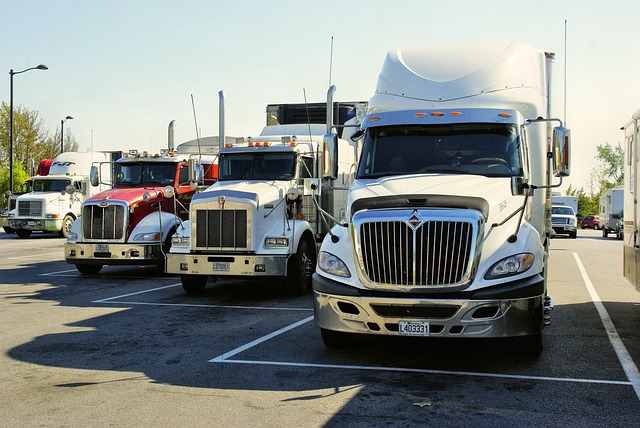Looking to register your car in California? Our comprehensive guide navigates the process, ensuring a smooth experience. From understanding key requirements to avoiding common pitfalls, we break down every step. Learn how the Department of Motor Vehicles (DMV) facilitates vehicle registration and crucial VIN (Vehicle Identification Number) verification. By following our expert tips, you’ll efficiently register your car in California, hitting the road with confidence.
- Understanding the California Car Registration Process
- Gathering Necessary Documents for Registration
- The Role of DMV in Vehicle Registration and VIN Verification
- Step-by-Step Guide to Registering Your Car in California
- Common Mistakes to Avoid During the Registration Process
Understanding the California Car Registration Process

Understanding the California Car Registration Process begins with recognizing that the Department of Motor Vehicles (DMV) oversees all vehicle registration and title transactions. The process involves several steps, starting with ensuring your car meets safety and emissions standards through a mobile VIN verification or inspection. This is crucial as it verifies your vehicle’s identity using its unique Vehicle Identification Number (VIN). Once passed, you can proceed to apply for a registration certificate at a DMV field office or, more conveniently, online.
When registering your car in California, it’s essential to bring necessary documents such as proof of insurance, identification, and the completed application form. Additionally, if you purchased the vehicle from a dealer, they typically handle the title transfer process for a small fee. Alternatively, for private sales, you’ll need to arrange for a mobile VIN inspection to confirm ownership and vehicle details before finalizing registration at the DMV.
Gathering Necessary Documents for Registration

Before heading to the DMV for car registration, ensure you have all the necessary documents prepared. This includes your vehicle’s registration certificate from the previous state (if applicable), proof of insurance, and a valid driver’s license. The key document that the DMV will verify is the Vehicle Identification Number (VIN). A VIN inspection ensures the accuracy of the vehicle’s information, which is crucial for security purposes.
Having a mobile vin verification service can be beneficial as it allows you to complete this step conveniently. Many mobile vin verifiers offer quick and accurate checks, ensuring your trip to the DMV is smooth. This process involves scanning the VIN on your car, which then gets cross-referenced with national databases to confirm its history, including any previous owners or reported damages.
The Role of DMV in Vehicle Registration and VIN Verification

The Department of Motor Vehicles (DMV) plays a pivotal role in California’s vehicle registration process. It serves as the central authority for issuing registration cards and ensuring that all vehicles on California roads meet necessary safety standards. One of its key responsibilities is performing a Vehicle Identification Number (VIN) verification, which is an essential step in the registration procedure. This involves checking the VIN against manufacturer records to confirm the vehicle’s make, model, year, and other critical details. By conducting these checks, the DMV helps maintain accurate vehicle records and identifies any potential issues or discrepancies related to ownership and history.
Additionally, the DMV facilitates a seamless transition for vehicle owners by offering various services, including online registration renewals and mobile VIN inspection tools. For instance, a mobile VIN verifier can be utilized to quickly gather essential information about a vehicle’s history, ensuring that all legal requirements are met before final registration. This streamlines the process, especially when compared to traditional methods, making it more efficient for both DMV staff and vehicle owners.
Step-by-Step Guide to Registering Your Car in California

Registering a car in California involves several straightforward steps, starting with gathering essential documents and ensuring your vehicle is eligible. Here’s a step-by-step guide to help you navigate the process smoothly. First, obtain the necessary paperwork, including your vehicle’s registration application form, which can be found at the California Department of Motor Vehicles (DMV) website. Next, perform a DMV VIN verification using your car’s unique Vehicle Identification Number (VIN). This step ensures that your vehicle matches the details on file with the manufacturer.
Once your VIN inspection is complete and you have confirmed your car’s eligibility, submit all required documents to your local DMV office or, if preferred, utilize services like mobile vin inspection or a mobile vin verifier for added convenience. After reviewing your application, the DMV will process your registration, assigning a unique California license plate to your vehicle. Ensure your vehicle’s registration is up-to-date and accurate to avoid any issues with state regulations.
Common Mistakes to Avoid During the Registration Process

When registering your car in California, it’s crucial to avoid common mistakes that can delay or even prevent completion of the process. One frequent blunder is failing to perform a proper DMV VIN verification. Every vehicle has a unique Vehicle Identification Number (VIN), and this code holds vital information about its history and specifications. A mobile vin verifier or vin inspection tool can help ensure all data aligns, avoiding issues later on.
Another pitfall is overlooking the condition of your car’s title. Make sure it’s free from any liens or errors before proceeding. Additionally, be prepared with all necessary documents, including proof of insurance and identification. Neglecting these steps can lead to delays, additional costs, or even rejection of your registration application.
Registering a car in California is a straightforward process that requires attention to detail and the right documentation. By understanding the steps involved, from gathering essential papers to completing the DMV’s vin verification, you can ensure a smooth registration experience. Remember to avoid common mistakes, like missing required documents or providing incorrect information, as these can delay the process. With this guide, you’re well-equipped to navigate California’s car registration requirements efficiently.
